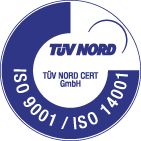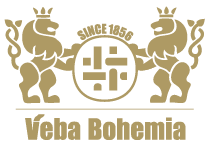
2D Weaving
2D fabrics are most often used as reinforcement for composites. The warp and the weft form a flat fabric. We divide these fabrics according to the weave type which affects the way the fabric adapts to the mould.
Most commonly used weave types:
Plain Weave

Plain weave is the most basic type of weave. This weave is the most tightly woven and has the smallest repeat of 2 × 2 .The interlacing of the warp and weft point alternates. The weft goes over the warp and then under the next warp. Another weft goes under the warp and then over the next warp. Such dense interlocking prevents the warp and the weft from shifting and results in a stiffer fabric. For this reason, plain weave is not that suitable for 3D shaping.
The appearance of such a fabric can be compared to a chessboard.
Plain weave is used, for example, to make tents and sails as well as for construction. Its dense interweaving is also suitable for filters where durability is required.
Basket Weave

This weaving technique is derived from plain weave and is formed by multiplying the warp and the weft equally. The smallest repeat of such a weave is 4 × 4 , in which the weft first goes over two warps and then passes under the next two warps. The following weft does the same thing. However the third weft does something different. First it goes under two warps and then over the next two warps. The fourth and last weft does the same thing as the third one. The repeat can be larger but must be divisible by two in order to maintain the same ratio of top and bottom threads.
This weave has fewer change-overs than plain weave and so the warp and the weft are more likely to shift. The weave is therefore more malleable and adapts well to moulds.
Rep Weave

This weaving technique is also derived from plain weave and is formed by extra warps and wefts in unequal proportions. The number of extra threads in a given direction determines the softness and malleability of the fabric.
Twill
3X3 Right Weft Twill

The smallest repeat for twill is 3 × 3 . The weft goes over two warps and under the next warp. All other wefts are shifted over by one thread either to the left for left twill or to the right for right twill. Because the weft goes over two warps and there is only one warp point beside this and the following wefts are offset to one side, an oblique row effect is created where the weft stripe is wider than the warp. This weave has a dominant weft compared to the warp. It is therefore referred to as weft twill.
Warp Twill 5 x 5 left
 When the weft goes under two warps and then over the next warp, the warp thread prevails on the surface. Such a twill is referred to as warp twill.
When the weft goes under two warps and then over the next warp, the warp thread prevails on the surface. Such a twill is referred to as warp twill.
If the weft goes over many warps then the twill will have a higher repeat. The oblique weft lines are even more pronounced in such weaves.
The warp/weft ratio must be the same if we want the warp and weft stripes to be of the same width. 4 × 4 twill is the smallest repeat of such weaves. Other repeats must be divisible by two to ensure the same ratio of warps over the weft and under the weft.
Related twills can be created from the basic twills in various ways.
Broken 5X10 Warp Twill

Twill has fewer change-overs. Therefore the warp and the weft can shift more easily. The more threads are used to make the oblique lines, the easier it is for the threads to shift. Therefore twills drape well and are suitable for moulding.
Twill technical textiles are used, for example, for tire cord.
Jacquard looms
 A jacquard on a weaving machine is a separate device that is placed on the construction above the loom. The jacquard is connected to the weaving machine and serves to control the warp yarns independently, creating a pattern. Electronic jacquards receive an electrical impulse according to a pre-recorded instruction card created thanks to a special design program. These electronic jacquards have the advantage of speed, less mechanical wear, lower operating costs and perfect synchronization with the weaving machine.
A jacquard on a weaving machine is a separate device that is placed on the construction above the loom. The jacquard is connected to the weaving machine and serves to control the warp yarns independently, creating a pattern. Electronic jacquards receive an electrical impulse according to a pre-recorded instruction card created thanks to a special design program. These electronic jacquards have the advantage of speed, less mechanical wear, lower operating costs and perfect synchronization with the weaving machine.
The jacquard weaving machine offers a wide range of weaving possibilities thanks to the fact that each thread can be operated independently. Dobby looms on the other hand operate several threads together through an instruction card. Changing weaves usually means using a new instruction card, which is not the case for jacquard looms.
Warp thread is leaded from jacquard machine through lines which is connecting jacquard hook with the heddle and the thread is into a heddle eye. In the lower position (heddle is not selected) is the warp thread under the inserted weft. This interlacing is creating weft overlap. In case , when the heddle is selected, the warp thread is lifted up and the weft is under the warp thread – warp overlap. The starting position for each heddle is in the lower position. This position is reached thanks to countermove, more common are springs than the rubbers one.
The shed is made by selecting heddles according to the pattern (part of the heddle are lifted up, the rest stay in the lower position). This shed makes free triangle shape to enable make a pick. When the pick is done, the reed beats up the thread into the woven structure. After this, the new shed is created by the pattern and the pick is inserted and beat up again. The jacquard woven fabric is made by this in repetition way.
Dobby looms and ORW

A dobby loom can be equipped with an ORW (Open Reed Weaving) device that stitches in extra threads in certain pre-defined places during weaving.
Location of the embroidering thread in the fabric is done by the electric impulse to servomotor which is connected to the rod and the rod is connected to the special harnesses with embroidering needless. The embroidering rod is able to move from side to side (the movement up and down is done by the head cam of the dobby loom) and the length of step aside is in the own pattern design and it is its part. This interconnecting weaving pattern with embroidering pattern into the only one pattern makes threads to be located repeatable with high accuracy. This embroidered thread makes pattern on the up face. The appearance and the density are done by the pattern (the length of step aside and the count of weft which is again connected into the fabric). The binding point can be in each weft pick – the density of embroidering is higher; or the binding point can be after five picks – the density of embroidering is lower and the angle is higher. Influence on the angle of embroidering thread has the ratio between picks count which is embroidered and the length of step aside of servomotor.
Common fabrics are only strong in 2 directions that is, along the warp and the weft. Various other angles of stitched-in threads give the fabric strength in a third direction and thus the fabric acquires further mechanical properties.
The type of stitched-in thread and the shape of the stitching can enhance the fabric with additional features such as heating, shielding, local reinforcement and aesthetic decoration.
* thread - generic name for longitudinal textiles
Headquarters
Přadlácká 89
550 01 BROUMOV
Czech Republic
Call centre:
+420 491 502 300
(7:00-15:00 CET)
callcentrum@veba.cz
Copyright
© VEBA, textilní závody a. s.
All rights reserved













